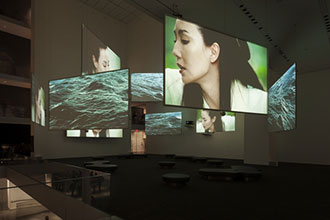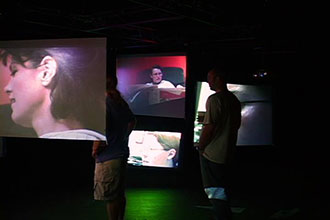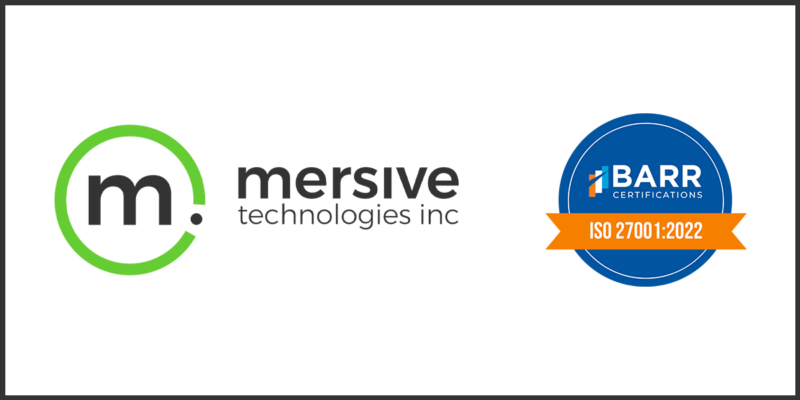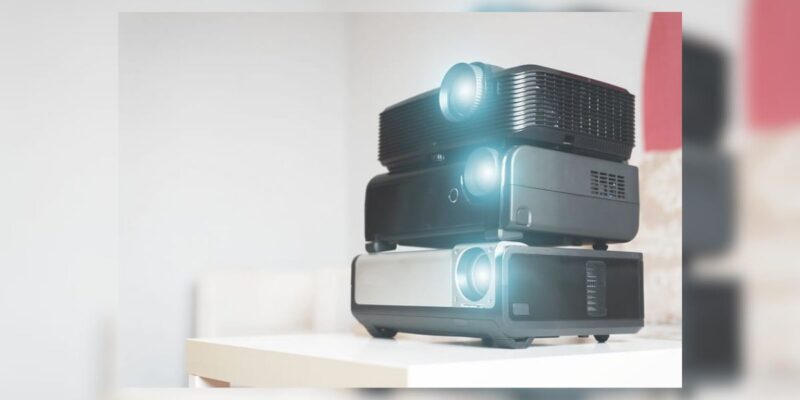Immersive Art: Ten Thousand Waves
 In my mind, art and science play a similar role — predicting and often guiding new technical directions that will eventually make their way into the mainstream. This is why I was so excited to see the new immersive film installation Ten Thousand Waves at MOMA. This exhibit, and others like it, highlight why projectors have a real future.
In my mind, art and science play a similar role — predicting and often guiding new technical directions that will eventually make their way into the mainstream. This is why I was so excited to see the new immersive film installation Ten Thousand Waves at MOMA. This exhibit, and others like it, highlight why projectors have a real future.
The exhibit utilizes nine dual-projection screens, hanging throughout a large space to immerse viewers in a display that carries them through a tragic story drawing upon both reality and myth. I’ve always been interested in re-defining what a “display” is and in this case it is the space, the orientation and different scale of each of the nine screens, and even the positions the viewers decide to take throughout the 55 minutes of experience.
 I worked with an outstanding new media artist, Doreen Malloney on a similar exploration in 2006. Using many digital cameras, placed throughout the artists living room, we captured dialogs, and individuals interacting over a long period of time. By positioning the same number of screens in the space at different angles, scales, and heights, visitors could visit the same room, but re-envisioned and abstracted into something different.
I worked with an outstanding new media artist, Doreen Malloney on a similar exploration in 2006. Using many digital cameras, placed throughout the artists living room, we captured dialogs, and individuals interacting over a long period of time. By positioning the same number of screens in the space at different angles, scales, and heights, visitors could visit the same room, but re-envisioned and abstracted into something different.
But do projectors have a future outside of experimental art and large-scale projection at events? With 4K flat panels, advances in OLED and flat panel adoption increasing, will projection have room in the market?
My answer is yes. Though you may find my reasons surprising. I won’t argue about image quality, price performance curves or new (and very exciting) advances in laser-based projectors. Instead, I’d encourage you to think about what makes projectors unique from their flat-panel cousins. Fundamentally, projectors have the following, very cool, properties:
- The display surface and the light-engine itself are decoupled. Where the image is emitted and where it is formed can be in very different places. Thus, spaces like Ten Thousand Waves can exist without the need for power cables and the electronics of the displays entering into the immersive space and disrupting the aesthetics.
- You can project on anything. Unlike displays that emit energy directly, projectors can “paint” any surface. Although this property has mostly been explored in an academic setting. It is only a matter of time before projected interfaces will make their way to everyday surfaces. Think augmented reality without having to wear anti-social headgear.
- Projected images can overlap. This is probably one of the more important differences and the reason Mersive was even launched. This means projectors can be clustered to achieve resolution, brightness, and size gains that are more in line with Moore’s line than is possible with single display technology. Even better, if you make it quick and easy to blend projectors together into single high-resolution images, then your display can no be flexibly reconfigured into new aspect ratios, sizes, and even variable resolutions – try that with your flat panel.
I think it’s important to see art installations and forward-looking AV demonstrations like the opening ceremony of the Olympics the same way I look at the latest research papers in Pattern Analysis and Machine Intelligence — as harbingers of more commercial applications of display that have yet to evolve. Pretty exciting stuff — and worth keeping in mind, especially if you are an AV consultant or designer who may be building the next immersive display space.





